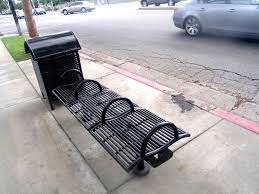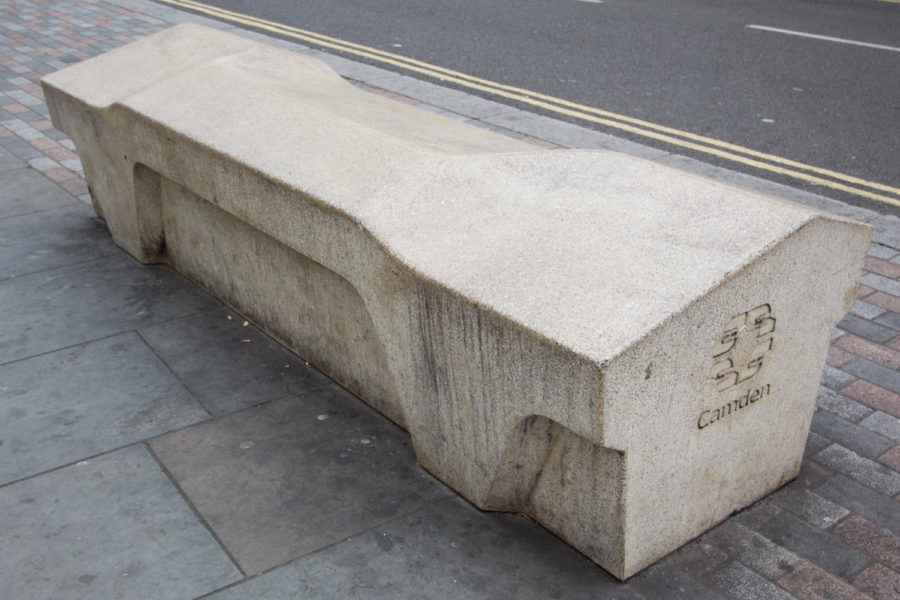Hostile Architecture Isn’t Preventing Homelessness
Camden Bench/Wikimedia Commons/CC BY-SA 4.0
The Camden Bench is a type of concrete bench that falls under the category of hostile architecture. It was designed to deter using it for sleeping, littering, skateboarding, drug dealing, grattifi, and theft. It was designed with angular surfaces, an absence of crevices, and resistant to water and paint.
In cities like Indianapolis and Bloomington, new bench designs are being placed in public spaces along with cacti being planted and decorative boulders being placed on sidewalks. These urban designs are being placed in an attempt to stop homeless people from resting in public spaces. They are known as hostile architecture.
According to The Diamondback, hostile architecture—also referred to as anti-homeless architecture—is not actually stopping or lowering the rates of homelessness. These designs are meant to stop homeless people from sleeping and camping in public spaces, such as parks or trails. However, the architecture leaves more than just homeless people at risk.

Anti-homeless designs can put elderly people, disabled people, children, and the environment at risk. According to Medium, most of the designs are incompatible with wheelchairs and mobility scooters.
Specific designs that are common in hostile architecture include sloped or curved benches, armrests in the middle of benches, spikes covering areas protected from the weather, ghost amenities, or a lack of amenities.
The people that are directly affected, homeless people, are not being helped whatsoever. They are simply being moved out of sight to promote tourism. Cities are treating homeless people as if they are worth no more than other “nuisances” that inhabit cities, such as sewer rats.
The unwelcoming atmosphere of hostile architecture and the effects that it has on cities make these places feel less like a united community that promotes social lives and meeting new people, and more like a dystopia that leaves everyone drained of mental energy.
It seems that cities are choosing to inconvenience entire communities rather than just housing the homeless. Why is the solution to homelessness to punish those that need help?
Your donation will support the student journalists of Logansport High School. Your contribution will allow us to purchase equipment and cover our annual website hosting costs.

Freshman Chelsee Osburn is part of the class of 2026, and it is her first year on the Magpie staff. She’s a reporter and enjoys reading and writing about...






